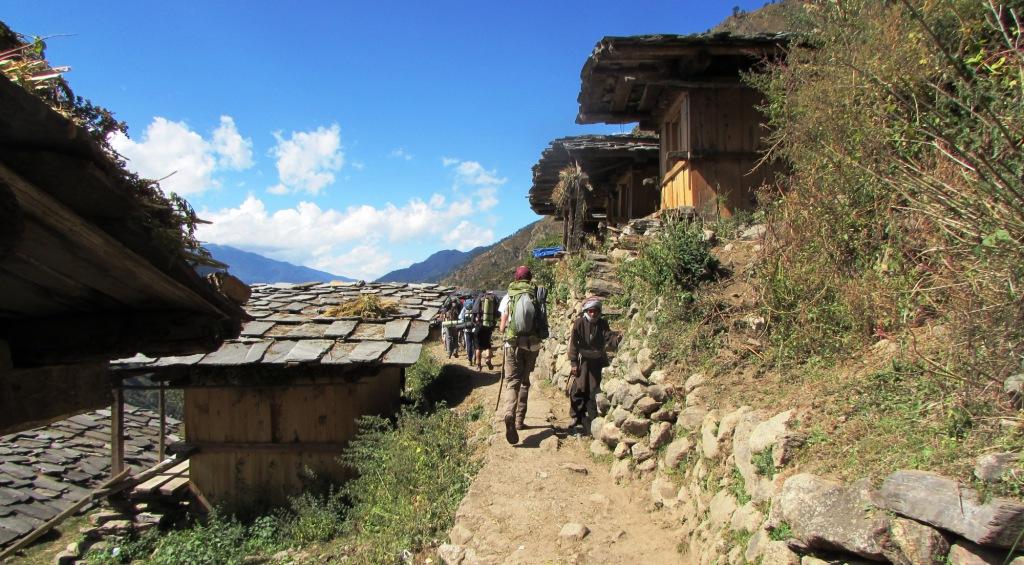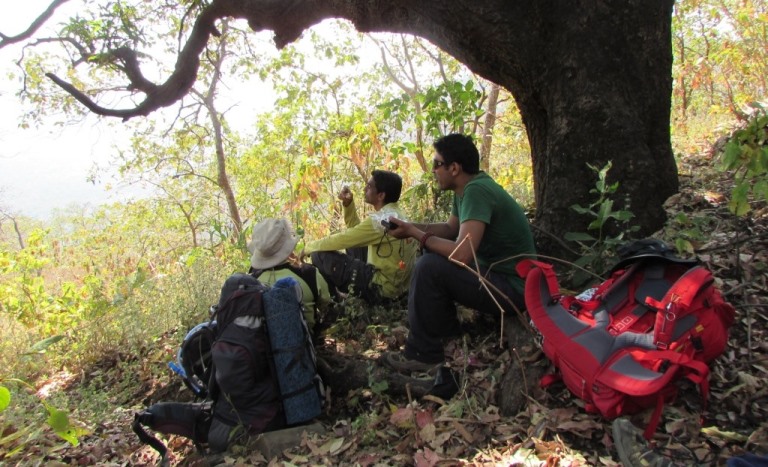Neatly done things also appeal to our sense of aesthetic!
As one walks on the sprawled out trails in the mountains, a neatly packed backpack does not wobble and jiggle and pull one off balance as one negotiates a tricky patch or takes a quick turn to transit from a zig to a zag on scenic switchbacks. But appropriately packing a backpack is only half the job done. A pack that ‘sits’ properly on your back contributes significantly to you achieving that swell feeling of ‘Oh I can go on and on forever!’ Here is a brief guide to make your backpack do exactly that…

Putting a backpack on
With a fully loaded backpack, there is a chance that you will strain your back just lifting it on to your back. There are some simple ways to avoid unnecessary strain.
Loosen all straps – these tend to be tightened to the fit when it was last used. The only exception is, of course, compression straps that need to be tightened to make the backpack as compact as possible.
With legs bent, lift your pack off the ground using either the haul loop or the top of the shoulder straps and place the pack on a bent knee. Now slip an arm through a shoulder strap and heave the pack on to your back. Alternatively, you could leverage the bottom of the pack off the ground and on to a bent knee before grabbing the haul loop to get the pack standing on that knee. Best is to have a friend hold your pack behind you for you to simply slip your arms into the shoulder straps!
Remember to keep your back straight while doing all of these manoeuvres.
Tip: It is best to do a bit of stretching before you put on your pack and start walking.

A backpack can present a formidable array of straps, belts and buckles! Used correctly, these help in immensely enhancing the comfort of the hiker and also contributes to the life of a backpack.
Suggested adjustments (refer illustration below):
After you have lifted the backpack on to your back, tighten shoulder straps but not completely – just enough for you to be able to tighten the waist belt.
You may have to bend forward slightly as you now tighten the waist belt, making sure that it rests on your hip bones.
Now tighten the shoulder straps further to bring the pack closer to your body, straightening your torso at the same time. Clip in the sternum strap, and leave enough room for easy breathing while you tighten it.
Now if you move your torso a bit, you may feel the backpack wobble a bit.. this is when you tighten the load adjuster straps to bring the pack closer to the body – I have seen people go ‘ah’ when this happens!
Many packs have small adjuster straps that connect the bottom of the backpack to its waist belt – these help stabilise the pack which has a ‘harness’ on which the ventilation and belt system is suspended.

When trying out a backpack in a store, make sure you fill it substantially to experience how it lies on your waist and back. Take the time to adjust its straps-suspension system to your torso length and fiddle with its various belts and straps while, if it is possible, walking around. If, despite using the sternum straps as recommended, the shoulder straps keep sliding off your shoulders then you should look for another pack that has more closely placed shoulder straps. The waist belt should be snug around your hip with no spaces in between the belt and your body.
Click here for my post on how to choose a backpack.
Click here for my post on how to pack a backpack.
